Salidroside can target both P4HB-mediated inflammation and melanogenesis of the skin
- PMID: 33042273
- PMCID: PMC7532676
- DOI: 10.7150/thno.47413
Salidroside can target both P4HB-mediated inflammation and melanogenesis of the skin
Abstract
Rationale: Many external factors can induce the melanogenesis and inflammation of the skin. Salidroside (SAL) is the main active ingredient of Rhodiola, which is a perennial grass plant of the Family Crassulaceae. This study evaluated the effect and molecular mechanism of SAL on skin inflammation and melanin production. It then explored the molecular mechanism of melanin production under ultraviolet (UV) and inflammatory stimulation. Methods: VISIA skin analysis imaging system and DermaLab instruments were used to detect the melanin reduction and skin brightness improvement rate of the volunteers. UV-treated Kunming mice were used to detect the effect of SAL on skin inflammation and melanin production. Molecular docking and Biacore were used to verify the target of SAL. Immunofluorescence, luciferase reporter assay, CO-IP, pull-down, Western blot, proximity ligation assay (PLA), and qPCR were used to investigate the molecular mechanism by which SAL regulates skin inflammation and melanin production. Results: SAL can inhibit the inflammation and melanin production of the volunteers. SAL also exerted a protective effect on the UV-treated Kunming mice. SAL can inhibit the tyrosinase (TYR) activity and TYR mRNA expression in A375 cells. SAL can also regulate the ubiquitination degradation of interferon regulatory factor 1 (IRF1) by targeting prolyl 4-hydroxylase beta polypeptide (P4HB) to mediate inflammation and melanin production. This study also revealed that IRF1 and upstream stimulatory factor 1 (USF1) can form a transcription complex to regulate TYR mRNA expression. IRF1 also mediated inflammatory reaction and TYR expression under UV- and lipopolysaccharide-induced conditions. Moreover, SAL derivative SAL-plus (1-(3,5-dihydroxyphenyl) ethyl-β-d-glucoside) showed better effect on inflammation and melanin production than SAL. Conclusion: SAL can inhibit the inflammation and melanogenesis of the skin by targeting P4HB and regulating the formation of the IRF1/USF1 transcription complex. In addition, SAL-plus may be a new melanin production and inflammatory inhibitor.
Keywords: Salidroside; interferon regulatory factor 1 (IRF1); prolyl 4-hydroxylase beta polypeptide (P4HB); tyrosinase; upstream stimulatory factor 1 (USF1).
© The author(s).
Conflict of interest statement
Competing Interests: The authors have declared that no competing interest exists.
Figures
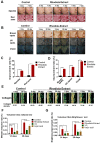
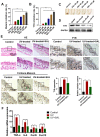
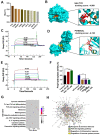
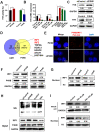
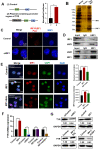
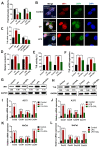
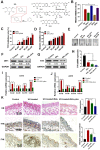
Similar articles
-
Anti-Pigmentation Effects of Eight Phellinus linteus-Fermented Traditional Crude Herbal Extracts on Brown Guinea Pigs of Ultraviolet B-Induced Hyperpigmentation.J Microbiol Biotechnol. 2018 Mar 28;28(3):375-380. doi: 10.4014/jmb.1711.11043. J Microbiol Biotechnol. 2018. PMID: 29316744
-
Inhibitory effects of salidroside and paeonol on tyrosinase activity and melanin synthesis in mouse B16F10 melanoma cells and ultraviolet B-induced pigmentation in guinea pig skin.Phytomedicine. 2013 Sep 15;20(12):1082-7. doi: 10.1016/j.phymed.2013.04.015. Epub 2013 Jun 7. Phytomedicine. 2013. PMID: 23746955
-
Tokishakuyakusan alleviates ultraviolet-induced skin pigmentation by decreasing the expression of melanogenesis-related enzymes.J Ethnopharmacol. 2024 Oct 5;332:118348. doi: 10.1016/j.jep.2024.118348. Epub 2024 May 17. J Ethnopharmacol. 2024. PMID: 38762211
-
Targeting tyrosinase in hyperpigmentation: Current status, limitations and future promises.Biochem Pharmacol. 2023 Jun;212:115574. doi: 10.1016/j.bcp.2023.115574. Epub 2023 Apr 29. Biochem Pharmacol. 2023. PMID: 37127249 Review.
-
Recent development of signaling pathways inhibitors of melanogenesis.Cell Signal. 2017 Dec;40:99-115. doi: 10.1016/j.cellsig.2017.09.004. Epub 2017 Sep 12. Cell Signal. 2017. PMID: 28911859 Review.
Cited by
-
The application of proteomics and phosphoproteomics to reveal the molecular mechanism of salidroside in ameliorating myocardial hypoxia.Heliyon. 2024 Apr 28;10(9):e30433. doi: 10.1016/j.heliyon.2024.e30433. eCollection 2024 May 15. Heliyon. 2024. PMID: 38737233 Free PMC article.
-
UVB-Induced Secretion of IL-1β Promotes Melanogenesis by Upregulating TYR/TRP-1 Expression In Vitro.Biomed Res Int. 2022 May 6;2022:8230646. doi: 10.1155/2022/8230646. eCollection 2022. Biomed Res Int. 2022. PMID: 35572734 Free PMC article.
-
The Inhibitory Effect of Curcumin Derivative J147 on Melanogenesis and Melanosome Transport by Facilitating ERK-Mediated MITF Degradation.Front Pharmacol. 2021 Nov 23;12:783730. doi: 10.3389/fphar.2021.783730. eCollection 2021. Front Pharmacol. 2021. PMID: 34887767 Free PMC article.
-
The Effects of 2'-Hydroxy-3,6'-Dimethoxychalcone on Melanogenesis and Inflammation.Int J Mol Sci. 2023 Jun 20;24(12):10393. doi: 10.3390/ijms241210393. Int J Mol Sci. 2023. PMID: 37373541 Free PMC article.
-
Salidroside Reduced Ca2+-CaM-CAMKII-Dependent eNOS/NO Activation to Decrease Endothelial Cell Injury Induced by Cold Combined with Hypoxia.Cell Biochem Biophys. 2024 Dec;82(4):3477-3487. doi: 10.1007/s12013-024-01434-2. Epub 2024 Jul 17. Cell Biochem Biophys. 2024. PMID: 39020087
References
-
- Yanase H, Ando H, Horikawa M, Watanabe M, Mori T, Matsuda N. Possible Involvement of ERK 1/2 in UVA-Induced Melanogenesis in Cultured Normal Human Epidermal Melanocytes. Pigment Cell Res. 2002;14:103–9. - PubMed
-
- Abdel-Malek ZA, Kadekaro AL, Swope VB. Stepping up melanocytes to the challenge of UV exposure. Pigment Cell Res. 2010;23:171–86. - PubMed
-
- Elwood JM. Melanoma and sun exposure. Semin Oncol. 1997;23:650–66. - PubMed
-
- Elwood JM, Gallagher RP, Hill GB, Pearson JC. Cutaneous melanoma in relation to intermittent and constant sun exposure-the Western Canada Melanoma Study. Int J Cancer. 1985;35:427–33. - PubMed
-
- Chen. Amended final report of the safety assessment of t-butyl alcohol as used in cosmetics. Int J Toxicol. 2005;24(Suppl 2):1–20. - PubMed
Publication types
MeSH terms
Substances
LinkOut - more resources
Full Text Sources
Other Literature Sources
Miscellaneous

